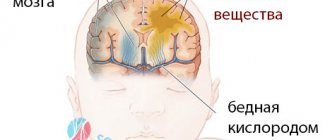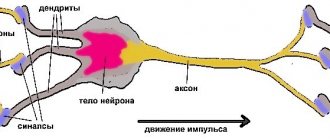A two-wheeled bicycle is a convenient, practical and useful vehicle that has firmly established itself in both the city and the countryside. In addition to its intended purpose, the bike is widely used in various sports. The overall design is identical when comparing a simple city bike, road bike or cross-country bike. The simple structure of a bicycle, however, is not limited to just the description of “wheels, handlebars, saddle, pedals” and includes a number of subtleties. In this article we will dwell in detail on the components of the bike and explain the purpose of each of them.
What does the bike rest on?
The structure of a bicycle is similar to a car: there is a supporting structure on which all working components are attached. For a passenger car this is the body, and for a bicycle it is the frame. The type of frame largely determines the purpose, and its quality is responsible for the life of the bike.
The bicycle frame is represented by a diamond-shaped frame welded from the following elements:
- main front pipes - top and bottom (closed), curved front pipe (open);
- seat tube;
- top feathers;
- lower feathers.
The front tubes are “stitched” together into a head tube, the down tube and stays with the seat tube into a bottom bracket tube, and the stays together into the dropouts of the rear wheel. On both sides, the front tubes and seatstays are welded to the top of the seat tube.
In relation to the seat tube, the front and rear parts are represented by two unequal triangles, the dimensions and geometry of which depend on the type and purpose of the bicycle. For the modern assortment, there are a large number of frame options, but they are all divided into classes:
- urban – hard, durable and heavy;
- mountain - resistant to loads, mobile, durable;
- road - light;
- sports – resistant to high loads, durable, shock-resistant;
- stunt - used for BMX bicycles.
The structure of a mountain bike in the picture
Bicycles are divided into full-size and folding. The first ones do not have a folding mechanism, and for transportation in the subway, public transport and the trunk of a car they must be disassembled. Folding ones have at least one joint along which the frame folds. They are more convenient to transport and store, but are inferior to full-size ones in terms of driving performance.
The material of the supporting frame has a great influence on the operation of the bicycle. Modern bicycles are available on steel, aluminum and carbon frames.
Steel is used on city bikes. The material has high strength and impact resistance, but its disadvantages are heaviness and low flexibility, which is why the frame does not smooth out shocks well. All this does not have the best effect on the dynamics of the bike.
Aluminum is a lightweight, strong and flexible material. Compared to steel counterparts, frames made from it have better maneuverability and passive shock absorption. Lightness and strength improve dynamics and do not create significant resistance to movement. Of course, their cost will be higher.
The most expensive are frames based on carbon fiber - carbon . This material is used on expensive models of road, mountain and sports bikes. Advantages compared to metal competitors include durability, strength, impact resistance and lightness. Plus, carbon bikes have better maneuverability compared to aluminum.
The head is a dark object, but subject to research. What is responsible for what in the brain?
The ability to breathe and move, feel pain and love, create brilliant creations and commit evil, sometimes beyond explanation. What makes all this possible? Where is our “I” hidden?
We seem to know a lot about the brain. And we don’t just know, we can control it. Pedagogy and psychology, neurology and psychiatry are the areas of knowledge that confirm this.
How does the human brain work, how do its structure and functions relate, and what are their features?
Let's try to understand some of them.
The simpler the more accurate
There is a position that the simpler a certain function, the more precise the location of its localization in the brain. On the other hand, the most complex functions are ensured by the coordinated work of the entire brain, and therefore the concept of a “cortical center” (a certain area of the cerebral cortex) is mostly relative and conditional.
From simple to complex
Sneezing, coughing, breathing, heart rate, blood pressure and the functioning of the digestive system are possible due to the presence of the medulla oblongata, a part of the nervous system directly connected to the spinal cord.
Did a dog suddenly bark in the yard? The orienting reflex in response to a sharp sound is possible thanks to the midbrain. In addition, through this region pass pathways that provide vision, hearing, the ability to move and vigilance, temperature control, and a number of others that are involved in other parts of the brain.
Read material on the topic: Leader of relativity Albert Einstein: how did the brain of a genius work?
Do you want to drink or eat? The hypothalamus, part of the diencephalon, is responsible for these feelings. It is also associated with such physiological functions as sleep and wakefulness, maintaining the constancy of the internal environment of the body.
THE CORTEX OF THE LARGE HEMISPHERES HAS A COMPLEX STRUCTURE AND CONTAINS 12-18 BILLION NERVE CELLS AND IS DIVIDED BY FROWS INTO SEVERAL LOBE
Now close your eyes and touch the tip of your nose with your fingers. It turned out without much difficulty, didn’t it? This is despite the fact that many different muscles were involved in this smooth action. Thanks to the cerebellum for coordination, balance, and normal movements.
Harder, harder
Emotions, such emotions... Without them, our life would not be so happy (unhappy?). An internal struggle that sometimes forces us to do things that we will later regret. Sound familiar? Thank you limbic system. I wonder what it is? A little more about it (and its parts).
Worried, sad? Or maybe you're scared? This is possible thanks to the amygdala (amygdala). An interesting fact: a feeling of happiness is also associated with the left amygdala, but the right amygdala is always in a bad “mood”.
Read the material on the topic: Bill Gates and his Asperger's syndrome
Do you remember the direction of movement? The hippocampus, another part of the limbic system, helps with this.
The conductor of sensory information - the thalamus - receives information from the senses, forwarding it for further processing to the cerebral cortex. Are you sleeping and don’t hear sounds, are you not affected by light? This is because the thalamus “sleeps” with you. But olfactory sensations can easily enter the sleeping thalamus. The sense of smell interacts closely with the amygdala and hippocampus. Therefore, smell is associated with memory and emotions.
And finally...
Gradually becoming more complex in the process of evolutionary development, the brain acquired a part known as the cerebral hemispheres, covered with a kind of “cloak” - the cerebral cortex. It has a complex structure and contains 12-18 billion nerve cells and is divided into several lobes by grooves.
So what is her role?
Thinking is associated with the frontal lobe. The front part of it, the so-called prefrontal cortex, is most involved in thinking. “You need to work”, “Don’t think about what others think of you.” The “rational” prefrontal cortex helps us with this.
Read the material on the topic: What happens to the brain of autistic people?
Our ability to move (thanks to the motor cortex), write clearly and legibly, and articulate is also associated with the frontal lobe.
Associative functions are provided by the parietal lobe of the cortex. Here are the areas responsible for touch, clear, combined purposeful movements, reading, cognition of objects, phenomena, their meaning and symbolic meaning.
Memory and the ability to hear - we have these capabilities thanks to the temporal lobe. Here is the center of oral speech, which allows us to speak beautifully and correctly, the centers of taste analyzers.
We can see thanks to the occipital lobe of the cerebral cortex, and we can count thanks to the center located at the junction of the parieto-occipital region.
It is striking that...
... a certain function does not always have one localization in the human brain. This is especially true for complex functions. For example, the so-called praxis - the ability to carry out purposeful motor acts - is possible thanks to a system involving the parietal and frontal lobes.
Read the material on the topic: What to do if cerebral gliosis is detected?
The most complex functions of memory and thinking do not have a clear location; various areas of the brain take part in their implementation.
Why is it important to know how brain function and structure are related?
Diagnostics. Imagine: a person has a severe headache. After a few minutes, he was no longer able to raise his right arm, and his speech became slurred. The patient's vision deteriorated on one side, while the ophthalmologist did not find pathology on the part of the eyes. Or, for example, a person has ceased to understand speech addressed to him.
Read the material on the topic: How to prevent a stroke?
Knowing which parts of the brain are responsible for a particular ability, we can guess the location of the pathological process.
Treatment and rehabilitation. Suppose that as a result of damage to a part of the brain after a stroke, a person “lost” some function. Does this mean she won't come back now? No, not always.
Read the material on the topic: What is the difference between ischemic and hemorrhagic stroke?
Thanks to such a property of the brain as plasticity, it is possible to restore this function. In simple terms, plasticity can be understood as the ability of other areas of the brain to take over the function of the damaged part. However, this process needs to be addressed purposefully. Therefore, after a stroke, a patient may need a course of neurorehabilitation, during which he re-learns to speak, walk, and care for himself.
Is everything ingenious simple?
No. The above descriptions of the relationship between structure and function are far from exhaustive: in reality, everything is much more complex and goes far beyond the scope of a short article.
Well, where is our “I”? Science has yet to answer this question. Isn't this a case where the whole is more than the sum of its parts?
Other materials on topics:
What is hidden behind the diagnosis of migraine?
"Cast iron head" How to alleviate your condition?
Vegetative-vascular dystonia - what is it - a diagnosis or a fiction?
What are the wheels made of?
Bicycle wheels are durable and lightweight structures that provide movement and, due to rotation, keep the frame in an upright position. Traditionally, a bicycle has rear-wheel drive, that is, the rear wheel is a pusher, and the front wheel is driven and is responsible for steering.
The picture shows what a classic bicycle wheel consists of. The device is simple and has not changed much since its inception.
Bicycle wheel diagram
The bushing is the central part, consisting of an axle, bearings and washers. The main purpose is to set and maintain torque. Transmission sprockets are attached to the rear bushings. The internal structure is more complex than that of the front ones, since the bushing is directly involved in spinning the wheel. On road models, in addition, a brake mechanism is integrated into the rear hubs. Planetary rear hubs have a hidden gear shift mechanism.
The rim is a round ring that is attached to the hub through the spokes. The geometry of the rim, combined with the tension of the spokes, determines the wheel's resistance to damage and dynamic loads. The rims for bicycle wheels are made of aluminum, the spokes are made of light alloys with chrome plating. Traditionally, spoke tension adjustment knobs are located at the rims, but there are also “reversible” knobs that are adjusted on the hub.
Tires consist of a tube and a tire. The chamber is a hollow rubber product that is inflated with air to the required pressure. It is connected to the “outside world” by a nipple, through which air is pumped into the tire. It’s also a good idea to find out what types of bicycle nipples there are and how they differ. To protect the tube from the sharp points of the spoke heads, a rubber flipper is placed on top of the inside of the rim.
The tire is the outer part of the tire and consists of beads, sidewalls and the contact part - the tread. Depending on the purpose of the bicycle, different types of tires are installed:
- slicks, semi-slicks - for road bikes, for smooth roads;
- road – tires with a medium tread pattern;
- aggressive – tires with a pronounced pattern, for mountain bikes;
- hybrid: can be used both on smooth surfaces and off-road (but are inferior in cross-country ability to aggressive ones).
The visibility of the wheel in the dark in the rays of light is ensured by the reflector - an orange insert on the spokes. Due to traffic safety requirements, the wheels of all bicycles are equipped with reflectors.
Shock absorption system
Details that soften shock loads and make the ride comfortable and enjoyable.
- Fork
. It can be shock-absorbing or rigid. The design of a bicycle suspension fork is much more complex than that of the second type. And they put it on hybrids and mountain bikes to minimize impacts. In road models the fork is rigid, because does not interfere with strong acceleration. - Rear shock absorber
. This element smoothes out frame vibrations and adds weight to the bike, which is why it is used on mountain bikes and touring bikes.
Control system and shock absorption
The main element of a bicycle is the steering unit. It includes several components:
- fork;
- steering column;
- take-out;
- steering part.
A bicycle fork serves as a connecting unit for the handlebars and the front wheel. Installed in the front glass of the frame using a rod. The handlebars are inserted directly into the fork, and the wheel is attached to the leg ears - dropouts.
Bicycle fork structure: shock-absorbing (left) and rigid (right)
In order for the fork to rotate freely when turning, a steering column is installed inside the glass. It consists of upper and lower cups, bearings and retaining rings. The cups can be pressed or screwed onto the internal thread of the glass (on expensive professional models). Bearings are divided into closed industrial and bulk ball bearings. The rings are put on the fork rod, which is fixed in the steering column.
A bicycle handlebar consists of a horizontal curved tube and a vertical rod. According to their shape, rudders are divided into:
- straight (for MTB and hybrids);
- curved upward (road);
- curved down;
- rams (for road bikes).
The vertical steering rod has a manifold at the end, which fixes the pipe in the fork when the nut is tightened.
Bicycle wheels without spokes
The stem is a part that determines the distance of the handlebars from the frame and is attached to the adjusting pipe. Different models have rigid and adjustable stems. Simple road bikes are not equipped with stems. The distance of the handlebars affects the position: the further it is, the more the cyclist assumes a horizontal position.
The saddle is fixed in the central tube of the frame by a seatpost. Height adjustment allows you to find the optimal fit. The width of the saddles varies depending on the type of bike: on road models they are wider than on MTB and road models. Saddles can vary in shape and length. They are spring-loaded or equipped with dampers at the bottom.
Shock absorption is the ability to dampen vibrations and soften shock loads. Traditionally, the shock absorption system is located in the front fork, and such bicycles are called hardtails.
Shock absorption consists of a spring and a damper. Depending on the components used, forks are divided into several types (spring/damper):
- spring (without damper);
- spring-elastomer;
- spring-oil;
- air-oil.
Adjustment of fork parameters: travel length (Preload), rebound speed (Rebound) and lockout. Forks without shock absorption are called rigid and are installed on road and road models.
In addition to standard shock absorption, mountain bikes are equipped with a rear shock absorber that smoothes out frame vibrations. Bicycles with two shock absorbers are called dual suspension.
Steering system
This is a bicycle device that consists of bicycle control elements. These include:
- Steering wheel
. An elongated steering wheel gives more control over steering, but does not allow setting speed records, so it is installed on MTVs and hybrids. There are also mutton (on road bikes) and straight (on MTV and hybrids). - Grips
. These are the handles on the steering wheel. They are needed to prevent the cyclist’s hands from slipping off the handlebars, and to soften impacts from uneven surfaces. - Steering wheel stem
. This is a short pipe that connects the handlebar and head tube. This detail determines the biker’s position: in sports models, for example, it is low. - Steering glass
. The part of the frame that connects the stem to the fork. - Steering column
. A part that allows the fork to rotate freely when cornering. Installed on the steering column
Transmission and bicycle brakes
The transmission is something without which the bike will not move. A rather complex unit, it includes most of the mechanisms:
- carriage;
- leading stars;
- connecting rods and pedals;
- chain;
- rear sprockets;
- speed switches and coins.
The carriage unit is located in the lower glass of the frame and serves as a connecting unit for the connecting rod pair and the front sprockets. The carriage provides free rotation without turning due to fixed bearings and a through axle on them. It is divided into two types: with open bearings and cartridge, where the entire mechanism is hidden inside the housing.
Connecting rods are parts for connecting the carriage to the pedals. They can have two mounting options: slotted and square. Two-piece, or paired, connecting rods come complete with a front sprocket (springs on high-speed models) mounted on the right connecting rod.
Twin cranks with square mount
Pedals are foot supports through which forces are transmitted to the connecting rods, carriage and chainrings. Depending on the scope of application, there are several types:
- classic, or platforms - are installed on entry-level bicycles, you can use any shoes, gripping the pedals due to friction forces;
- contact - with special inserts, intended only for cycling shoes, improved grip;
- extreme - for a sports bike, wide surface, thickness, inserts-retainers;
- pedals with straps;
- mini pedals.
The rear transmission sprockets of a speed bicycle are attached to the rear wheel hub. For one front sprocket there are 2-3 rear ones. Small chainrings are responsible for high gears, and large chainrings are for low gears.
The connecting link between the front and rear sprockets is a chain: the bicycle uses a Gall block model. The chain transfer is carried out using switches that are controlled by shifters on the steering wheel. Shifters are divided into two types - drum and lever. They are connected to the switches by drive cables.
There are no derailleurs on the singlespeed, there is only one front and rear sprocket, and the chain is shorter.
Brakes are the most important system, without which it is strictly prohibited to roll out a bicycle. Modern braking systems for bicycles of various classes:
- rim pliers, V-brake;
- disk;
- drum-sleeve.
Rim brakes are clamping devices with pads that act on the rims of the wheels, slowing their rotation. Pincer models have one fastening; due to the movement of the lever, the staples are brought closer together, and when loosened, they move back. The pliers are placed where the wings are secured. Used as additional brakes on singlespeed and road bikes.
V-brake works on the same principle, but the brackets are in a fixed state: to the fork for the front brake, to the stays for the rear brake. V-brake have greater accuracy and braking power compared to pincer brakes.
A disc brake consists of a disc mounted on a hub (braking surface), a caliper and a drive - a lever and a cable. The brake pads are attached to the calipers, which are pressed against the disc when the handle is pressed. The precision of discs is higher than that of V-brake due to a larger braking surface, less pad travel and independence from rim geometry. Based on the type of drive, disc brakes are divided into mechanical and hydraulic.
Drum-sleeve brakes are quite outdated, but continue to be actively installed on road models. The drum is hidden in the rear bushing and is brought into contact with the shoes by pressing the pedals backwards. To prevent the bushing from rotating, a special locking mechanism is built in. Braking efficiency is low compared to rim and disc counterparts, but for single-speed road users there is no better option.








